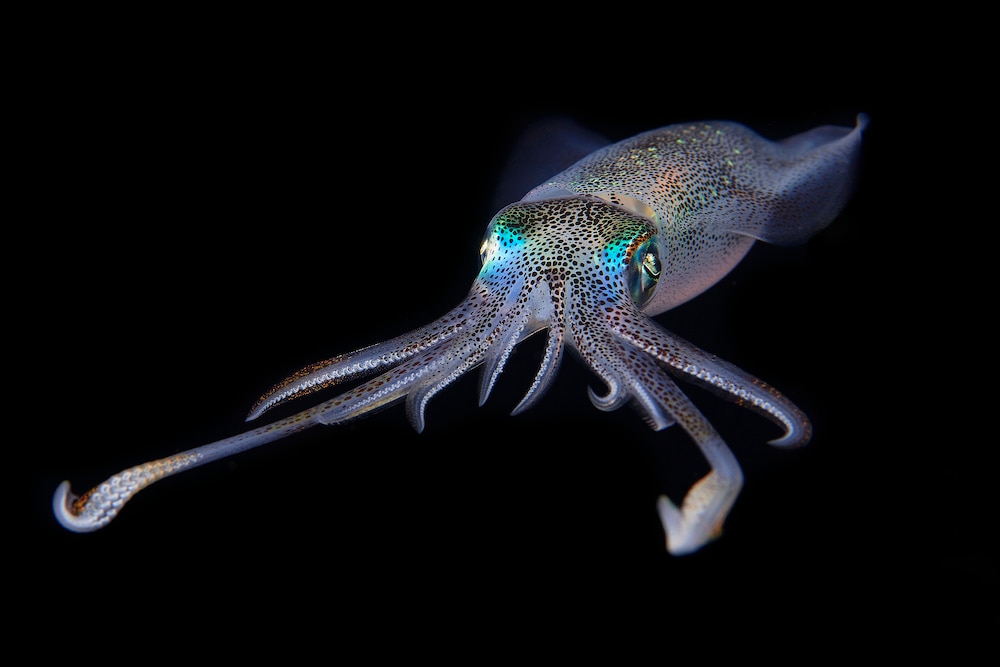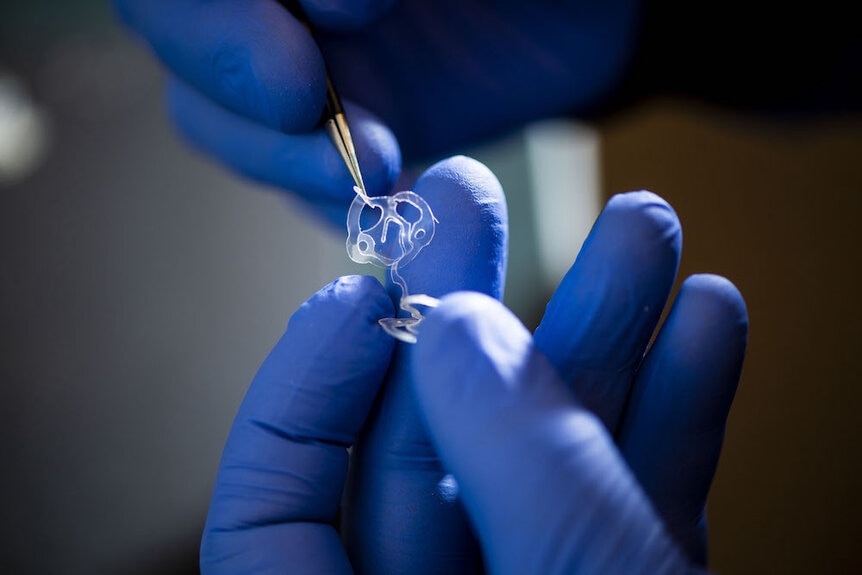Create a free profile to get unlimited access to exclusive videos, sweepstakes, and more!
Summer is coming, and squid skin can tell you when you’ve been in the sun too long
Sunscreen still required.

The sun staying awake later and later can only mean that summer is on the horizon — and with it, scorching, ridiculously hot days with a UV index that could be lethal.
Catching too many rays can cause skin cancer. This is the reason there are entire drugstore sections devoted to sunscreen, but especially during the summer when the Sun can do its worst. Even those of us who reapply SPF like we’re supposed to may not know how long is too long before we need to chill under an umbrella for a while. The problem is, it is impossible to find out if you’ve been exposed for too long if you don’t have any sort of indicator.
That indicator now exists. Xanthommatin, a chemical that helps cephalopods like squid, cuttlefish, and octopi go incognito to throw off predators, is also UV-reactive. Researcher Dan Wilson of Northeastern University, who led a study recently published in ACS Sensors, discovered that this substance changes color in sunlight. It started with xanthommatin not behaving as expected and ended up with the creation of the first UV sensor ever.
“To make progress toward emulating the advanced functions of a complex biological tissue like cephalopod skin, we have to start with an understanding of how its components work,” Wilson told SYFY WIRE. “We used what we learned to create a consumer-focused sensor prototype.”
This sensor is actually a sticker that can be put on a shirt, hat, or bathing suit before you head outside (and it won’t cramp your style because it’s the size of a fingertip). When xanthommatin’s instability in UV radiation kept disrupting another experiment for a different potential application, Wilson realized that it could be used for something else. His team’s research goes towards everything from using xanthommatin as a dye to creating human camouflage that reacts to the environment and blends in just like the skin of a cephalopod.
Xanthommatin is found in chromatophores. These are organs in cephalopod skin that each have a cytoelsastic sacculus, a bizarre sac made of threadlike structures, whose elasticity allows it to deform and manipulate light. Inside the sacculus are tiny spheres of xanthommatin, which can be red, yellow, or brown, the colors chromatophores are associated with. Muscles surrounding the sacculus will make it expand to increase visible color or contract to decrease it. Cephalopods can have anywhere from thousands to millions of these, which give them invisibility powers.
“The device design allows the sensors to be stored dry and then hydrated with an activating solution at the push of a button. Separation of components until it’s time to use the device protects the xanthommatin from degradation, which really enhances the shelf life,” said Wilson.
These things are made of paper and xanthommatin packed inside layered, transparent plastic microfluidic devices, which have micro-channels etched into them for sorting out different fluids. Pressing the button releases fluid at the edge of the sticker and dyes the paper with xanthommatin. When in UV light, the color of the xanthommatin will morph from a yellowish orange to red, and how red it gets depends on how much radiation it is exposed to.
So when can you get this? There are a few things that still need to be evened out before it’s available on the market. However, Wlison won’t stop there. He wants to keep exploring the reactions between xanthommatin and other molecules in chromatophores, as well as chemical or electrical stimuli that control it, which could eventually lead to — among other things — clothes that make us invisible. He also thinks it could be possible to use xanthommatin as a sensor for space radiation. Earth has nothing on the cosmic rays that bombard astronauts.
“It could be really interesting to think about whether xahnthommatin could be responsive to other forms of higher-energy radiation, and if we could design a device that could withstand the extreme conditions of space,” he said.
Until the sticker is available, watch out for a high UV index in the forecast and always wear sunscreen.



























